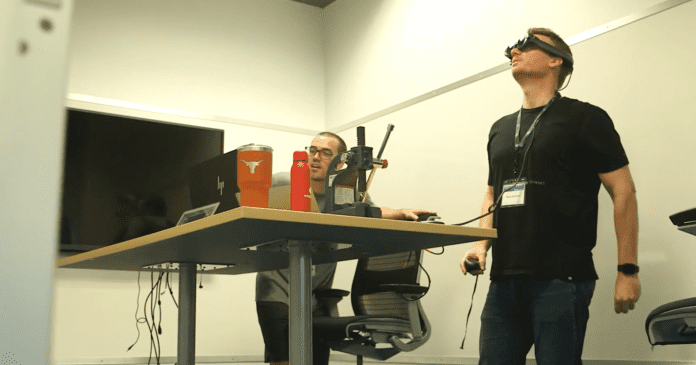AT&T hosted app developers using 5G and AR for healthcare, retail, finance, manufacturing
The future is “phygital,”–a portmanteau of physical and digital, according to AT&T Business Executive Vice President and Chief Marketing Officer Mo Katibeh. Writing in a recent blog post, the AT&T executive reflected on the opportunities the combination of 5G and augmented reality and bring to high-value enterprise verticals like healthcare, retail and manufacturing.
The operator recently hosted a hackathon at its Foundry facility in Plano, Texas. A host of teams spent the weekend working out applications for the Magic Leap One hardware, a sophisticated headset, using AT&T’s millimeter wave-based 5G network, which is live in a number of markets and currently geared toward select business customers.
Magic Leap bills the One hardware as a spatial computing device. On the spec side, the device features a NVIDIA Parker system-on-chip, two Denver 64-bit cores and 4 ARM 64-bit cores and, a NVIDIA GPU, 8 GB RAM and 128 GB of storage.
NVIDIA® Parker SOC; 2 Denver 2.0 64-bit cores + 4 ARM Cortex A57 64-bit cores (2 A57’s and 1 Denver accessible to applications)
The winning team, PharmaLeap, came up with an application meant to make it easier for pharmacists to select the appropriate drugs from their inventory, tally the number of pills and match coding on medication with particular prescriptions.
“The application increases efficiency for the business and may help enhance patient safety!,” Katibeh wrote. “This is an incredible time for technological convergence. The opportunities for business are almost endless when combining the best of spatial computing, 5G, edge compute, artificial intelligence and internet of things.
In a video produced at the event, Patrick Medina of BeMyApp said the speed of the millimeter wave 5G connection led to reduced development time.
Magic Leap takes a partner-driven approach to working with enterprises and developers to come up with monetizeable applications. Another example would be its work with BadVR on SeeSignal, which enables data visualization to show cellular, Wi-Fi and Bluetooth signal strengths.
BadVR CEO Suzanne Borders said the application can help as operator’s like AT&T deploy 5G networks. “Visualizing this data will help telecoms, telecom adjacent, and smart city organizations to better plan the rollout of 5G networks and determine the best placement for microcells,” she said in an interview. “Other use cases include using our additional signal layer visualizations to visualize and monitor Wi-Fi network traffic, and for installing networks within new buildings.”

